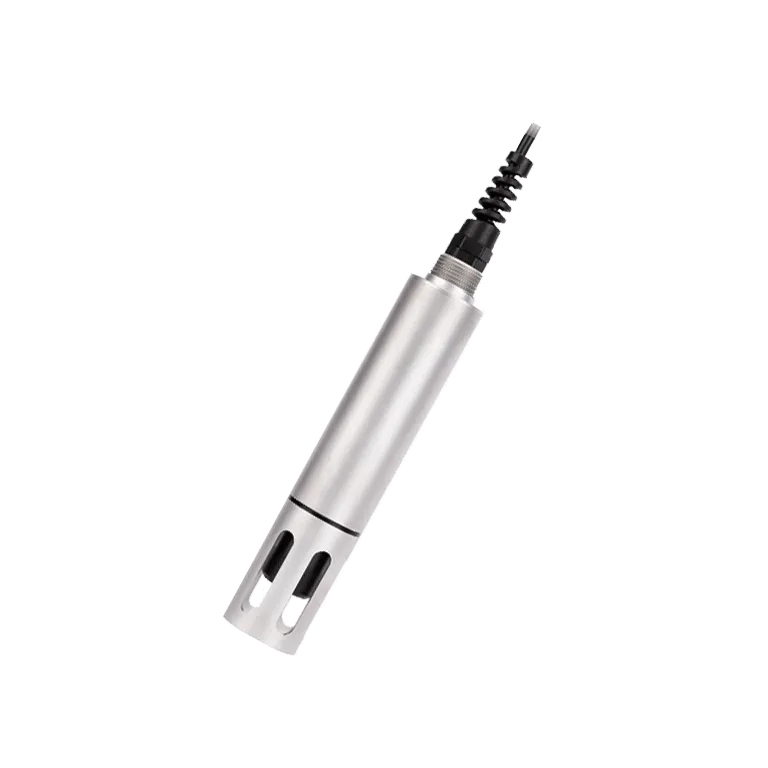Facility managers overseeing wastewater treatment or drinking water plants know that accurate dissolved oxygen levels are non-negotiable for process control and compliance. Traditional methods can be cumbersome and prone to drift. Innovation in the Water quality sensor market has driven the adoption of advanced fluorescence technology. These in-line DO analyzers offer a stable and low-maintenance alternative, providing continuous, reliable data essential for modern water management.
Table of contents:
Fluorescent Coating Excitation and Red Light Detection in DO Sensor Systems
Real-Time Temperature Compensation Using Built-In Sensors and Sensor de ph Data
Anti-Interference Mechanisms Enhancing Digital COD Sensor Reliability
Fluorescent Coating Excitation and Red Light Detection in DO Sensor Systems
A clever optical process lies at the heart of modern dissolved oxygen measurement. Picture a sensor submerged in a pipeline at a sewage treatment facility. This sensor features a special fluorescent coating. An internal blue LED emits light, which excites this coating, causing it to glow and emit red light. The intensity of this emitted red light is not constant; it is directly affected by the amount of dissolved oxygen in the water. When oxygen molecules collide with the coating, they quench the fluorescence, effectively dimming the red light. A sensitive photodiode array inside the sensor detects this red light, and the system's controller calculates the oxygen concentration. Higher oxygen levels result in weaker red light and a quicker decay of the fluorescence. This principle allows for highly accurate measurements, typically within a range of 0–20 mg/L with a resolution of 0.01 mg/L. For plant operators, this means getting a precise reading in under 60 seconds. This reliability is why many leading DO sensor suppliers are championing this technology, impacting the entire Water quality sensor market.

Real-Time Temperature Compensation Using Built-In Sensors and Sensor de ph Data
Accounting for environmental variables, primarily temperature, is essential for accurate dissolved oxygen readings. The solubility of oxygen in water changes significantly as temperatures fluctuate, which can lead to misleading data if not properly corrected. This is a critical consideration for operators. To address this, advanced DO sensors incorporate a built-in temperature sensor. This allows the system to perform real-time, automatic compensation, ensuring the final measurement reflects the true oxygen concentration. Furthermore, the system can be adjusted for both salinity and atmospheric pressure, two other factors that influence oxygen solubility. This multi-parameter compensation is a key differentiator among DO sensor suppliers. While this specific sensor measures DO, its digital RS-485 output allows it to integrate seamlessly into a larger network. This means its compensated data can be analyzed alongside information from a separate sensor de ph to build a complete water quality profile, a valuable capability in the broader Water quality sensor market.
Anti-Interference Mechanisms Enhancing Digital COD Sensor Reliability
Fluorescence-based DO measurement offers inherent resistance to interference, which is one of its most significant advantages. Unlike traditional electrochemical sensors, this technology does not consume oxygen, so its readings are not affected by flow rate variations. This makes it ideal for dynamic environments like industrial effluent pipelines. The digital RS-485 Modbus RTU signal is also far less susceptible to the electrical noise common in industrial settings compared to older analog outputs. This focus on anti-interference is a core principle that extends across the modern Water quality sensor market. For example, the same design philosophy enhances the reliability of a digital COD sensor. Leading DO sensor suppliers use robust materials, like stainless steel IP68-rated housings, for physical protection. This philosophy of combining smart measurement with durable design is why both advanced DO and digital COD sensor systems are becoming so trusted for process control.
The shift towards fluorescence-based measurement is reshaping the Water quality sensor market by providing a more stable and dependable way to monitor dissolved oxygen. This technology delivers the accuracy and low-maintenance operation that modern water treatment facilities require. With simple routine upkeep, such as the yearly replacement of the fluorescence membrane cap, these systems maintain their performance for the long term. For organizations upgrading their monitoring, partnering with experienced DO sensor suppliers provides access to robust solutions, ensuring water quality is managed with precision.
